Recall that the Reserve Bank of Australia’s (RBA) Statement on Monetary Policy (SoMP) forecast that Australia’s unemployment rate would end the year at 4.3% and peak at just 4.4% in mid-2025:
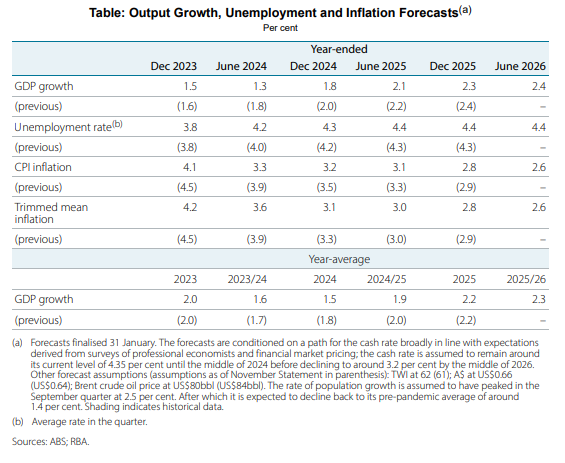
The RBA also forecasts that broader labour underutilisation will remain well below pre-covid levels:
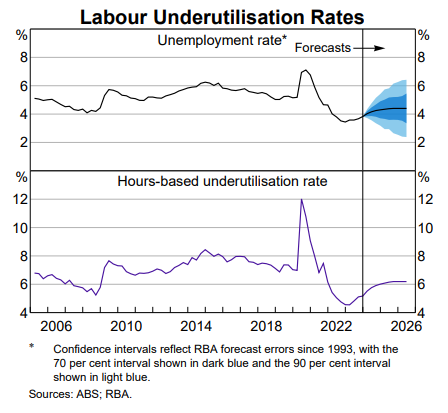
The RBA’s forecasts are already looking incredibly shaky, with Australia’s unemployment rate rising to 4.1% in January amid a collapse in hours worked:
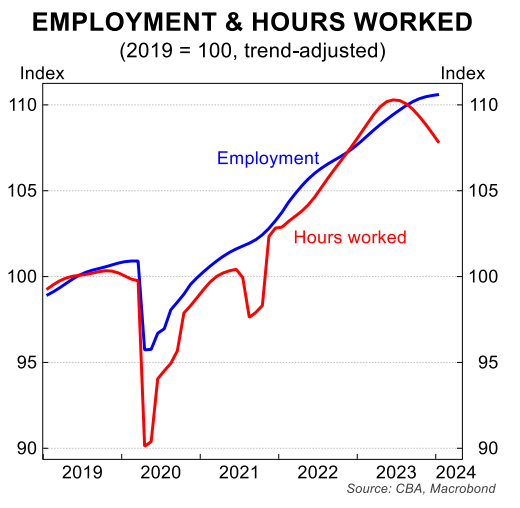
As we know, the Albanese government is running a record immigration program, which is growing labour supply at a record rate:
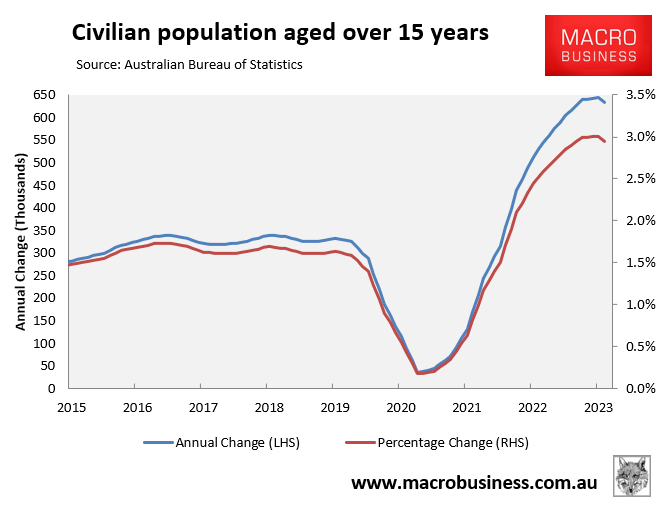
This rapid expansion of the labour supply means that Australia has to create nearly 35,000 jobs per month just to keep the unemployment rate stable (assuming a steady participation rate):
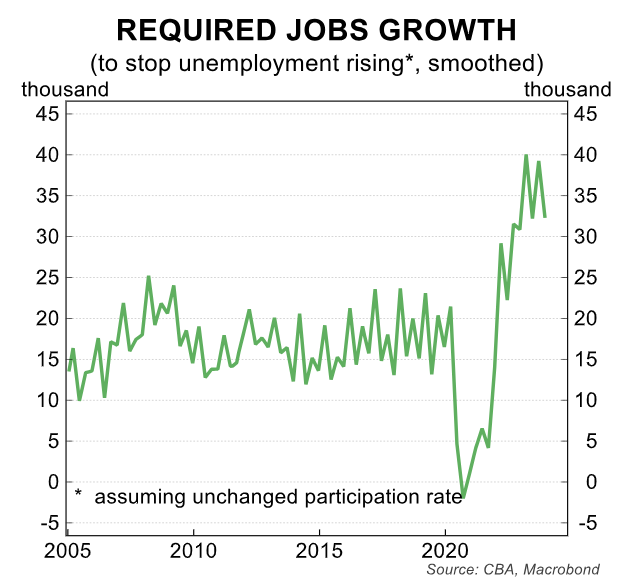
But, with the economy slowing, the number of applicants per job advertisement has soared way above pre-pandemic levels, according to Seek, pointing to rising unemployment ahead:
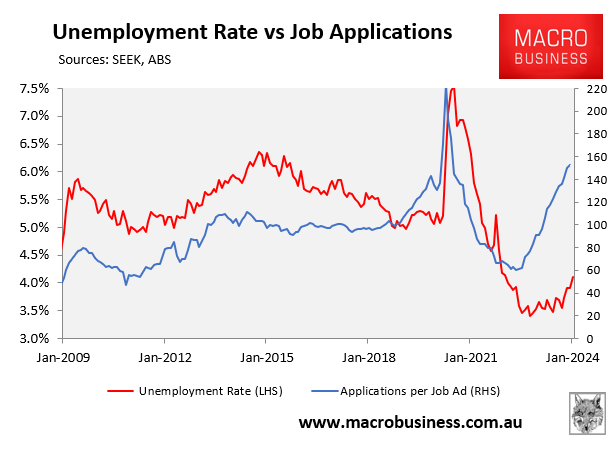
Thus, with Australia’s unemployment rate certain to shoot up above the RBA SoMP’s forecasts, MB has long argued that the RBA will be forced to cut interest rates in the second half of the year (possibly even sooner).
AMP’s deputy chief economist, Diana Mousina, now shares our view, tipping rate cuts as unemployment rises.
Mousina told the ABC that ongoing weakness in household consumption and economic growth will translate into further increases in unemployment.
“By the time we get to the middle of the year, we’ll see the unemployment rate at about 4.5%”, she forecast.
“And we see about three rate cuts in this current year”.
KPMG’s chief economist, Brendan Rynne, also believes that the RBA will cut rates “sooner and faster” than many, including the RBA’s own analysts and board members, think.
“The national accounts out next Wednesday will reveal the December 2023 quarter GDP figures — and it will be a close-run thing as to whether they show the economy is going backwards with negative growth”, he wrote.
“There is a risk that Australia could not only be in a per capita recession (given four out of the previous five quarters showed real GDP per capita declining) but could also tip into a technical recession”.
Slowly but surely, economists are aligning with MB’s views on interest rates.

